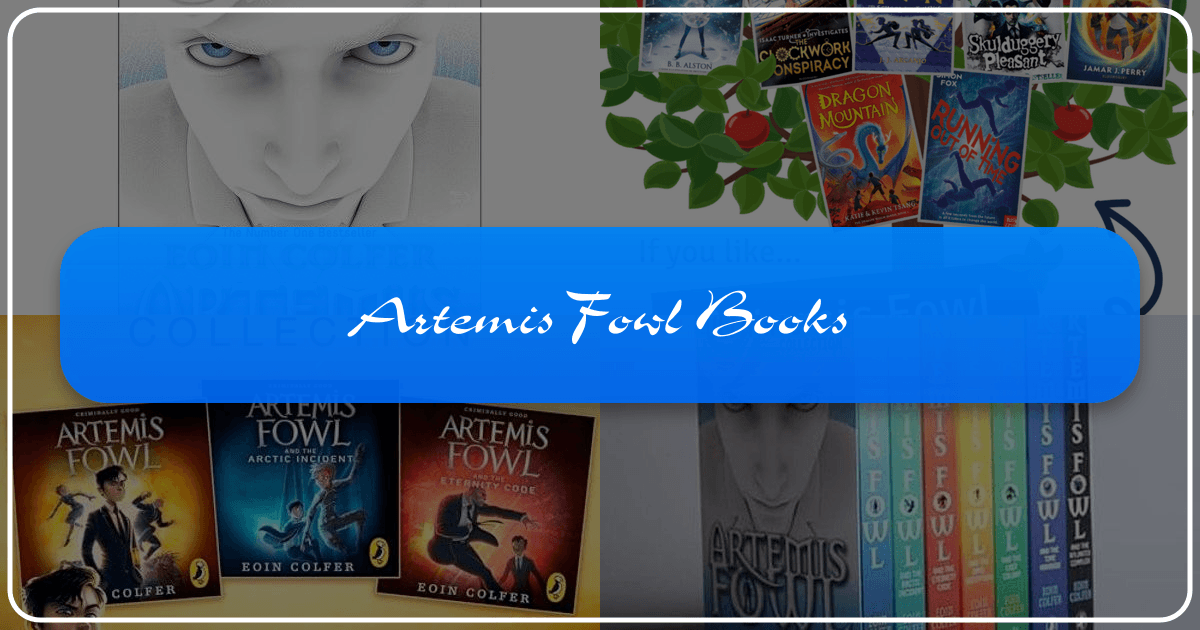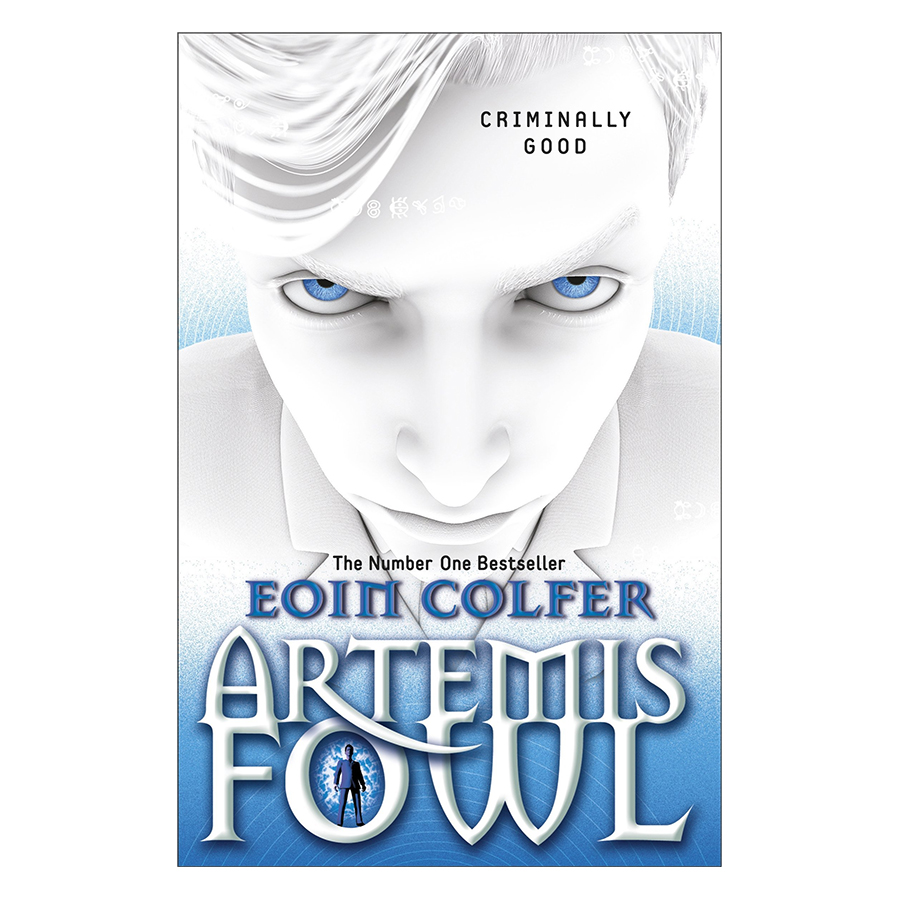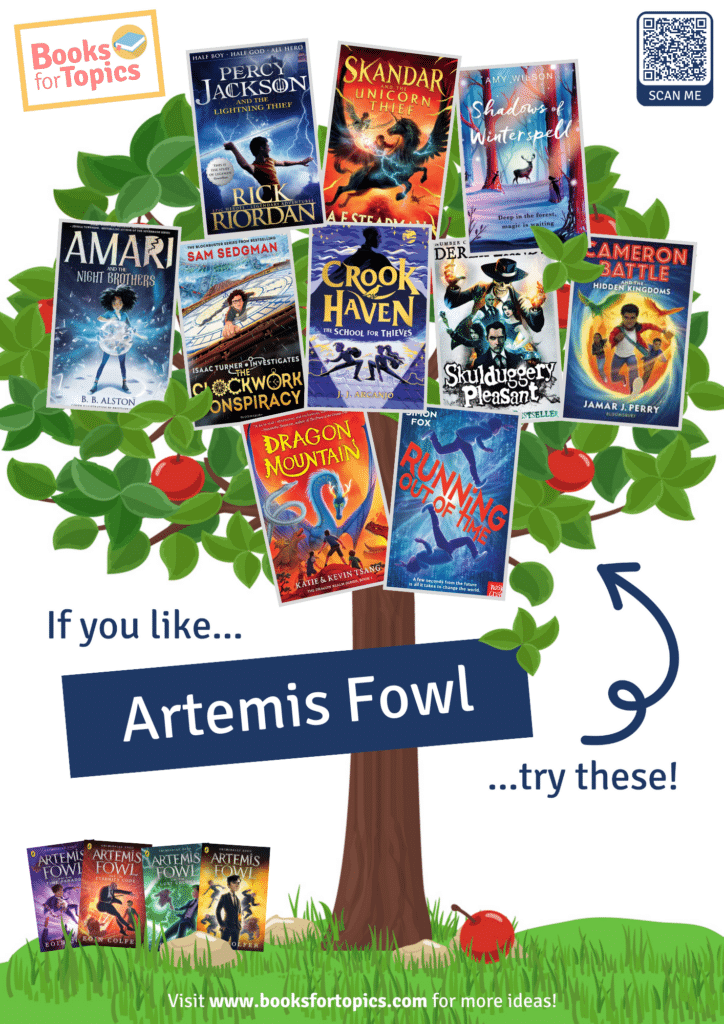Artemis Fowl Books: A Deep Dive into the World of Eoin Colfer's Fantasy Series

Eoin Colfer’s Artemis Fowl series has captivated readers worldwide with its unique blend of fantasy, crime, and technology. This exploration delves into the books themselves, their author, their impact on readers and the wider culture, and their enduring legacy. We will examine the series through various lenses, including genre analysis, authorial influences, educational value, and its lasting cultural impact.
The Artemis Fowl Books: Genre, Style, and Themes
The Artemis Fowl series defies easy categorization. While primarily marketed as children’s literature, the sophisticated plots, complex characters, and mature themes blur the lines between children’s and young adult fiction. The series seamlessly integrates elements of several genres:
Fantasy: The series’ core premise hinges on the existence of a hidden world of fairies, trolls, and other mythical creatures, coexisting with humans beneath the Earth’s surface. This fantastical element provides the setting and backdrop for the series’ adventures. The magic system is intricate, incorporating advanced fairy technology and magical abilities that interact with and often conflict with human technology.

Crime Fiction: At its heart, Artemis Fowl is a series of intricate criminal plots. Artemis Fowl II, the protagonist, is a twelve-year-old criminal mastermind who utilizes his exceptional intellect and advanced technology to execute complex heists and schemes. The series features thrilling plots, suspenseful moments, and intricate puzzles that mimic the hallmarks of classic crime fiction.
Science Fiction: Colfer masterfully blends the fantastical elements of fairy lore with cutting-edge technology. Artemis’ inventions, based on stolen fairy technology, push the boundaries of human ingenuity. The sophisticated gadgets and technological advancements used throughout the books contribute significantly to the series’ science fiction aspects. The inclusion of future technology and advanced weaponry adds a dimension of wonder and adventure, drawing upon common tropes found in science fiction.
Adventure: Each book in the series is an adventure story. The narrative unfolds through perilous journeys, exciting chases, daring escapes, and high-stakes confrontations. The characters frequently face life-threatening situations, testing their ingenuity, resilience, and courage in various dynamic settings. This adventure aspect is a significant part of the series’ appeal, especially for young readers.

Coming-of-Age: Underlying the thrilling adventures and intricate plots is the coming-of-age story of Artemis Fowl II. Throughout the series, Artemis undergoes significant character development. He transitions from a ruthless criminal mastermind to a more morally complex character, exhibiting compassion and loyalty. His interactions with Holly Short and other characters trigger his growth and moral transformation, making this theme a prominent and important element to the story.
The First Cycle: Artemis Fowl (Books 1-8)
The first eight books form the core narrative arc of the Artemis Fowl saga. They chronicle Artemis’s transformation from a criminal mastermind to a reluctant hero. Each book presents a unique challenge that tests his intellect and morality, forcing him to confront his actions and adapt to ever-changing circumstances. The series establishes a complex world with deep lore and a unique dynamic between the human and fairy worlds. The narrative complexity and the gradual revelation of broader world-building details throughout the series also contribute to its success and long-lasting popularity.

The Second Cycle: The Fowl Twins (Books 9-11)
This trilogy shifts the focus to Artemis’s younger twin brothers, Myles and Beckett. While retaining the series’ signature blend of fantasy, technology, and adventure, the focus shifts from Artemis’s individual journey to the dynamics of his family and the adventures they undertake together. The setting is somewhat different, involving various settings and new challenges faced by the twin characters. It continues to explore themes of family, loyalty, and the complexity of right and wrong. This is done using the same sophisticated plots found in the earlier novels, proving the author’s ability to maintain the quality and appeal of the series.
Eoin Colfer: Authorial Style and Inspirations
Eoin Colfer, the author of the Artemis Fowl series, is known for his unique and engaging writing style. His narrative voice is witty and engaging, blending humor with suspense to create a captivating reading experience. He effortlessly balances detailed descriptions of complex technology and mystical lore with the emotional development of his characters.
Writing Style
Colfer’s writing style is characterized by several distinctive traits:
-
Wit and Humor: A distinct sense of humor runs through the Artemis Fowl books, often injected through witty dialogue, clever wordplay, and sarcastic remarks. This humor lightens the tone and engages the reader, even during the most suspenseful moments of the series.
-
Intricate Plotting: The plots of the Artemis Fowl novels are exceptionally complex and well-crafted. They are full of twists, turns, and surprises that keep the reader guessing until the very end. These intricate plots serve to enhance the series’ suspense and drama.
-
Detailed World-building: Colfer’s detailed world-building is evident in his creative depictions of both the human and fairy worlds. His descriptions are vivid and engaging, immersing the reader in the unique culture, technology, and social dynamics of each world. The depth and consistency in his descriptions prove Colfer’s mastery of storytelling.
-
Character Development: Although the first book presents Artemis as a villain, his character development across the series is a central focus. His transformation from ruthless criminal to a more morally complex individual is explored throughout the narrative. The development of other significant characters enhances the series’ emotional impact.
Inspirations
Colfer’s inspirations are diverse, drawing from various sources:
-
Fairy Tales and Mythology: The foundation of the Artemis Fowl world is clearly rooted in classic fairy tales and mythology. Colfer skillfully reimagines traditional fairy creatures, blending them with modern technology and human conflicts.
-
Crime Fiction: The sophisticated criminal plots and intricate heists that shape the series’ central storylines echo classic works of crime fiction. These elements are incorporated with the same levels of quality and detail, providing a rich and engaging storyline.
-
Science Fiction: The integration of advanced technology and futuristic gadgets elevates the series into the realm of science fiction. The author blends the fantastical with the realistic, creating a compelling world that seamlessly blends magic and technology.
Reading Habits, Educational Value, and Life Lessons
The Artemis Fowl books provide entertainment, but they also offer educational and developmental benefits for young readers. The series demonstrates:
Reading Habits: The adventurous nature of the series encourages reading for pleasure. The sophisticated yet accessible language promotes vocabulary development. The books’ lengths and age appropriateness guide readers to develop healthy reading habits and a love of reading.
Educational Value: The series’ complex plots and detailed descriptions foster critical thinking, problem-solving skills, and attention to detail. The series also promotes exploration of different genres, vocabulary building, and increased interest in reading.
Life Lessons: The series explores complex themes of morality, ethics, and the consequences of choices. The character development of Artemis provides valuable lessons on personal growth, redemption, and the importance of empathy.
Summaries of Main Plots
Artemis Fowl (Book 1): Artemis Fowl II, a criminal mastermind, kidnaps Captain Holly Short, an LEP officer, to obtain fairy gold.
Artemis Fowl and the Arctic Incident (Book 2): Artemis and Holly team up to rescue Artemis’s father from the Russian Mafia and combat a goblin rebellion orchestrated by Opal Koboi.
Artemis Fowl and the Eternity Code (Book 3): Artemis and Holly work together to recover a stolen supercomputer, the C Cube.
Artemis Fowl and the Opal Deception (Book 4): Artemis and Holly thwart Opal Koboi’s attempt at world domination.
Artemis Fowl and the Lost Colony (Book 5): Artemis, Holly, and their allies travel through time to prevent the release of demons.
Artemis Fowl and the Time Paradox (Book 6): Artemis and Holly travel to the past to save Artemis’s mother from Opal Koboi’s control.
Artemis Fowl and the Atlantis Complex (Book 7): Artemis deals with a magical disorder, the Atlantis Complex, and confronts his evil alter ego, Orion.
Artemis Fowl and the Last Guardian (Book 8): Artemis and Holly prevent Opal Koboi from opening the Berserker’s Gate and unleashing the spirits of fairy warriors.
The Fowl Twins (Book 9): Artemis’s younger twin brothers, Myles and Beckett, become involved in fairy adventures.
The Fowl Twins Deny All Charges (Book 10): Myles and Beckett Fowl face new challenges and adventures in the fairy world.
The Fowl Twins Get What They Deserve (Book 11): Further adventures of the Fowl twins.
Libraries and Archives: Accessibility and Preservation
The Artemis Fowl series is widely available in various libraries and digital archives, ensuring accessibility for a broad readership. The books’ presence in both physical and digital libraries contributes to their continued popularity and accessibility for future generations. These digital and physical libraries ensure the preservation of Colfer’s work, ensuring that young readers will continue to have access to it.
Cultural Impact: Adaptations, Awards, and Communities
The Artemis Fowl series has had a significant cultural impact, evident in several ways:
Literary Influence: The series’ unique blend of fantasy, crime, and technology has influenced subsequent works of young adult fiction, inspiring other authors to explore similar thematic blends.
Adaptations: The books have been adapted into a film (although this adaptation received mixed reviews, particularly regarding its deviation from the original source material), and a musical is currently in development. These adaptations demonstrate the series’ wide appeal.
Awards: The Artemis Fowl series has garnered numerous awards and accolades, recognizing its literary merit and popularity. These awards serve as recognition for Colfer’s achievement in writing.
Communities: A dedicated fan community has emerged around the Artemis Fowl series, fostering discussion, analysis, fan fiction, and celebration of the books. This demonstrates the enduring power and influence of the series. This dedicated community actively contributes to the preservation of the series through online forums and fan-created content.
In conclusion, Eoin Colfer’s Artemis Fowl series stands as a remarkable achievement in children’s and young adult literature, blending genres, captivating readers, and leaving a lasting cultural impact. Its intricate plots, witty writing, and thoughtful exploration of complex themes continue to resonate with readers of all ages.